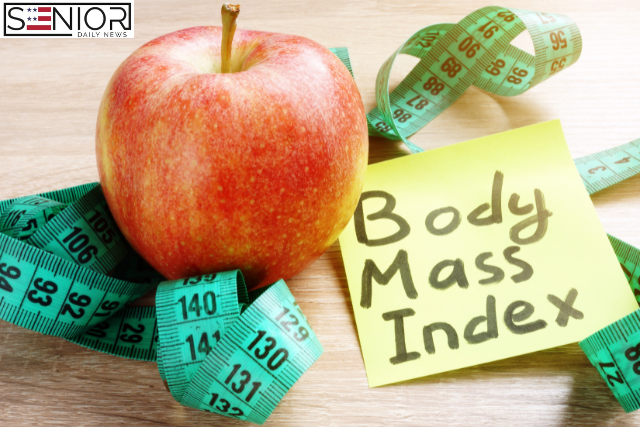Understanding Body Mass Index (BMI) for Seniors: A Comprehensive Guide

As we gracefully journey through our senior years, maintaining good health becomes paramount. One of the tools often used by healthcare professionals to assess weight status is the Body Mass Index, or BMI. However, interpreting BMI in older adults requires a nuanced understanding, as the “ideal” ranges and implications can differ from those of younger individuals. This comprehensive guide aims to shed light on BMI for seniors, exploring its calculation, interpretation, limitations, and more importantly, providing a holistic perspective on healthy aging.
What Exactly is Body Mass Index (BMI)?
At its core, BMI is a simple and widely used measure that estimates body fat based on height and weight. It’s calculated by dividing a person’s weight in kilograms by the square of their height in meters (BMI=height (m)2weight (kg)). While BMI doesn’t directly measure body fat, it provides a useful indicator of whether a person’s weight is in a healthy range for their height.
The Standard BMI Categories:
The World Health Organization (WHO) provides the following standard BMI categories for adults:
- Underweight: Below 18.5
- Normal weight: 18.5 to 24.9
- Overweight: 25.0 to 29.9
- Obese: 30.0 or higher
Why is BMI Used for Seniors?
BMI can be a valuable initial screening tool for seniors for several reasons:
- Ease of Calculation: It requires only height and weight, which are relatively easy to measure.
- Large Population Studies: BMI has been used in numerous large-scale studies, providing data on weight-related health risks across different age groups.
- Identification of Potential Risks: It can help identify seniors who may be at increased risk for certain health conditions associated with being underweight or overweight/obese.
- Monitoring Weight Changes: Tracking BMI over time can help monitor weight fluctuations, which can be significant in older adults due to various factors.
The Nuances of BMI in Older Adults:
While BMI offers a convenient starting point, it’s crucial to recognize its limitations, especially when applied to the senior population. Several age-related physiological changes can influence the interpretation of BMI:
- Loss of Muscle Mass (Sarcopenia): Seniors often experience a natural decline in muscle mass and an increase in body fat, even if their overall weight remains stable. This means a senior with a “normal” BMI might still have a higher percentage of body fat and lower muscle mass, which can have negative health implications. BMI doesn’t differentiate between muscle and fat.
- Changes in Body Composition: Body water content tends to decrease with age, which can also affect weight and BMI readings.
- Height Loss: Spinal compression and other age-related changes can lead to a decrease in height. If the historical height is used in the BMI calculation, it might underestimate the BMI. Accurate, current height measurements are essential.
- Bone Density: While BMI is positively associated with bone mineral density in older adults, meaning higher BMI often correlates with higher bone density, BMI itself doesn’t directly measure bone density. A senior with a healthy BMI could still have osteoporosis or osteopenia.
- Distribution of Body Fat: Where fat is stored is more important than the overall amount of fat. Visceral fat (fat around the organs) is more strongly linked to health risks than subcutaneous fat (fat under the skin). BMI doesn’t provide information about fat distribution.
Healthy Weight Ranges for Seniors: Are They Different?
Considering the physiological changes in older adults, some experts suggest that a slightly higher BMI might be acceptable or even beneficial for certain seniors. Some studies have indicated that a BMI in the upper end of the “normal” range (23-29.9) or even slightly into the “overweight” category might be associated with better outcomes in older adults, particularly in terms of resilience to illness and longevity.
However, this doesn’t mean that obesity is healthy for seniors. A significantly high BMI still carries risks for conditions like heart disease, type 2 diabetes, osteoarthritis, and certain cancers. The key is to consider the individual’s overall health status, functional abilities, and presence of chronic conditions.
Beyond BMI: A Holistic Approach to Healthy Weight in Seniors:
Given the limitations of BMI alone, a comprehensive assessment of a senior’s weight status should include other factors:
- Waist Circumference: This is a good indicator of abdominal fat. A high waist circumference (over 40 inches for men and over 35 inches for women) is associated with increased health risks, regardless of BMI.
- Body Composition Analysis: Techniques like bioelectrical impedance analysis (BIA) or dual-energy X-ray absorptiometry (DEXA) can provide more accurate estimates of body fat percentage and muscle mass.
- Functional Assessment: Evaluating a senior’s ability to perform daily activities (like walking, climbing stairs, and getting up from a chair) provides crucial information about their overall health and well-being, which might not be reflected in BMI.
- Nutritional Assessment: A registered dietitian can assess a senior’s dietary intake to ensure they are getting adequate nutrients. Unintentional weight loss, even with a “normal” BMI, can be a sign of malnutrition or underlying health issues.
- Physical Activity Levels: Regular physical activity helps maintain muscle mass, bone density, and a healthy weight.
- Presence of Chronic Conditions: Existing health conditions can influence what a healthy weight range looks like for an individual senior.
Practical Tips for Maintaining a Healthy Weight as a Senior:
Focusing on sustainable lifestyle changes is key:
- Nutrient-Dense Diet: Emphasize fruits, vegetables, whole grains, lean protein, and healthy fats. Limit processed foods, sugary drinks, and excessive saturated and unhealthy fats.
- Regular Physical Activity: Aim for a combination of aerobic exercise (like walking, swimming, or cycling), strength training (to maintain muscle mass), and balance exercises (to prevent falls). Consult with a healthcare professional to determine safe and appropriate activities.
- Adequate Hydration: Drink enough water throughout the day.
- Monitor Weight Regularly: Tracking weight can help identify any significant or unintentional changes.
- Consult Healthcare Professionals: Discuss your weight and overall health goals with your doctor or a registered dietitian. They can provide personalized recommendations based on your individual needs.
Addressing Underweight in Seniors:
Being underweight can be just as concerning as being overweight for seniors. Unintentional weight loss can be a sign of underlying medical conditions, malnutrition, or social isolation. It can lead to weakened immunity, increased risk of falls, and slower recovery from illness. If a senior is underweight, it’s crucial to:
- Identify the Underlying Cause: Work with a healthcare professional to determine why the weight loss is occurring.
- Focus on Nutrient-Rich Foods: Encourage small, frequent meals that are high in calories and protein.
- Consider Nutritional Supplements: Under medical guidance, nutritional supplements might be recommended.
- Ensure Adequate Social Support: Loneliness and isolation can impact appetite and overall well-being.
Conclusion: BMI as One Piece of the Puzzle
Body Mass Index can be a useful initial tool for assessing weight in seniors, but it should never be the sole indicator of health. Understanding the physiological changes of aging and considering other factors like waist circumference, body composition, functional abilities, and overall health status is essential for a comprehensive evaluation. The goal for seniors is not just about achieving a specific BMI number, but about maintaining a healthy and functional body weight that supports an active, independent, and fulfilling life. By adopting a holistic approach and working closely with healthcare professionals, seniors can navigate their weight journey with greater clarity and achieve optimal well-being.
Frequently Asked Questions (FAQs) about BMI for Seniors:
Q: Is the standard BMI chart the same for seniors as it is for younger adults? A: While the standard BMI categories are generally applied to seniors, the interpretation can differ. Some experts suggest that a slightly higher BMI might be acceptable or even beneficial for some older adults due to factors like muscle loss.
Q: What BMI range is considered healthy for a 70-year-old? A: A BMI between 23 and 29.9 might be considered acceptable for some seniors, but it’s crucial to consider individual health status and other factors beyond BMI. Consulting a healthcare professional is recommended.
Q: Can BMI tell me if I have too much body fat? A: BMI is an estimate based on height and weight and doesn’t directly measure body fat. It’s possible for seniors with a “normal” BMI to have a higher percentage of body fat due to age-related muscle loss.
Q: What are some better ways to assess healthy weight in seniors besides BMI? A: Waist circumference, body composition analysis (like BIA or DEXA), functional assessments, and nutritional evaluations can provide a more comprehensive picture of a senior’s weight status and overall health.
Q: What should I do if my BMI falls outside the “normal” range? A: If your BMI is outside the normal range, it’s important to consult with your doctor. They can assess your overall health, consider other factors, and provide personalized recommendations for managing your weight.
Q: Is unintentional weight loss in seniors always a cause for concern, even with a normal BMI? A: Yes, unintentional weight loss in seniors, even with a normal BMI, can be a sign of underlying medical conditions or malnutrition and should be evaluated by a healthcare professional.
Image Designed Using Canva






